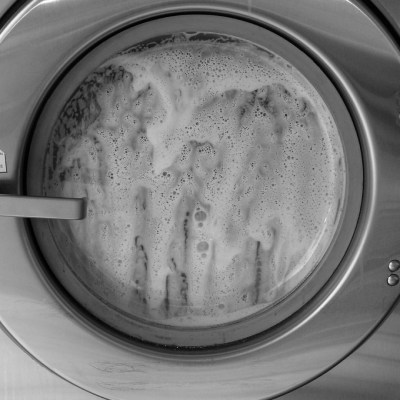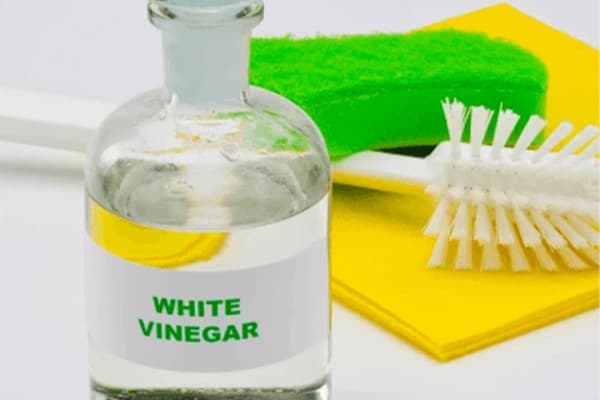When you are sick with a cold or flu, your bed can feel like an oasis as you try to recover. Once you fully recover, you then realize it’s time to wash your bedding to get rid of the pesky virus.
If you think that throwing your bedding into the washing machine and using laundry detergent will simply do the trick, you need to think again. While detergent may help your bed sheets look and smell fresh, it won’t kill off any lingering viruses and allergens.
Fortunately, disinfecting bedding isn’t too difficult a task. Since every kind of material has different washing instructions, we will explain how to ensure you can kill off viruses without causing damage to your bedding.
Disinfecting bedding
When it comes to disinfecting anything, bleach is the best weapon. However, you need to be very careful using bleach when trying to disinfect your bedding. You should check the washing instructions or your bedding’s tags to see if you can safely use bleach. Each label will tell you if you can use chlorine or non-chlorine bleach, or if you can not use any kind of bleach. If you can use bleach, do not add pure bleach directly onto any bedding, as it can damage the bedding. Instead, make sure to dilute the bleach first. Instructions should be available on the bleach bottle, so make sure to pay attention. Of course, only use bleach when necessary.

If you aren’t able to use bleach, or you are too worried to use it, fret not! Fortunately, there are products available that can help disinfect your bedding without having to use bleach.
One alternative you can use to help disinfect your bedding is phenolic disinfectants. Most manufacturers of this kind of disinfectant have indicated that you can actually use cold water when trying to disinfect your laundry, and you will still get the same benefits without having to use hot water.
Pine oil also has disinfecting properties. You will need to find a pine oil product that is 80% pine oil in order for it to be effective. If you are sensitive to the pine fragrance, make sure to run a second rinse cycle to remove any residue. If you suffer from allergies, or your pets tend to jump on the bed, you will want to avoid using pine oil, as it can cause issues for those with allergies, and can be toxic to animals. Other essential oils you can try are tea tree oil, lavender oil or thyme oil. Again, some essential oils can actually be allergens or toxic to animals, so make sure you understand the risks of each oil if you are contemplating their use.
Have some white vinegar laying around in the kitchen? This can also be used to help disinfect your bedding! Just add half a cup of the vinegar into the washing machine. Vinegar also helps deep clean your bedding, giving you bright, fresh smelling sheets each time you use it.

On top of washing the sheets with the solutions above, you can also look into soaking your bedding before putting them into the washing machine. You can create a soaking solution made of water, laundry liquid, vinegar and baking soda. Both the baking soda and vinegar are great at killing any bacteria and viruses on your bedding.
And finally, you can use the power of steam to help kill off viruses. Handheld steamers can produce enough heat that can help with the disinfection process. To get the best result, it is recommended that you steam clean for at least five minutes.
Wash the washing machine and dryer
If you haven’t done so before, make sure you wash the washing machine. As odd as this sounds, the washing machine can actually harbor viruses that can live on built up contaminants, leftover detergent, and fabric softener. And when you do a load of laundry without disinfecting your washing machine, you can actually transfer the viruses right back onto your bedding! Gross, right? Fortunately, there are easy ways of disinfecting your washer, and even your dryer too!
You can either use chlorine bleach, or use things like pine oil, phenolic disinfectants, or quaternary disinfectants if you aren’t a fan of chlorinated bleach. MAKE SURE YOU CHOOSE ONLY ONE METHOD (BLEACH OR ANOTHER METHOD), AS MIXING CLEANING CHEMICALS IS DANGEROUS AND CAUSE SERIOUS ISSUES!
To start, set your washing machine to the hottest water temperature possible. Water temperatures at 130 degrees and above are best at killing viruses and allergens. Add one cup of chlorine bleach to the machine. If you are using a different disinfectant, make sure to read the instructions on the label to create the proper solution. Of course, make sure you don’t have any laundry in the machine at the time. Then, let the washing machine run on a full cycle. If you can have hot water run throughout the entire process, select that option.
Once the cycle completes, inspect the inside of the washer for any additional areas that need cleaning, especially if they have any residue or mold. This includes any seals and gaskets that are inside the machine, as well as the detergent and/or fabric softener dispensers. Use a solution of a quarter cup of the selected cleaning chemical to a quarter of water, and dip a cloth or soft-bristled brush into the solution and scrub to remove any buildup. Do one more rinse to make sure any of the cleaning chemicals are fully off the interior before loading the next set of laundry. And, of course, make sure you clean the outside of the washing machine using hot water and the cleaning chemicals.

Make sure you disinfect the dryer as well. Start with removing lint from the dryer screen. Use gloves when doing so, as the lint may be contaminated. You can clean the dryer using either a quarter of a cup of chlorine bleach and a quart of water, or mixing a solution with the alternative chemicals, following the instructions on the label. Dip the cloth or soft-bristled brush into the solution, and scrub the entire interior of the dryer, including the drum, gaskets and seals. After scrubbing everything down, make sure to clean off the solution by using a clean cloth dipped in plain water. To dry it all off, place old towels or rags into the dryer, and run for 10 minutes. Make sure to clean the outside of the dryer as well.





















